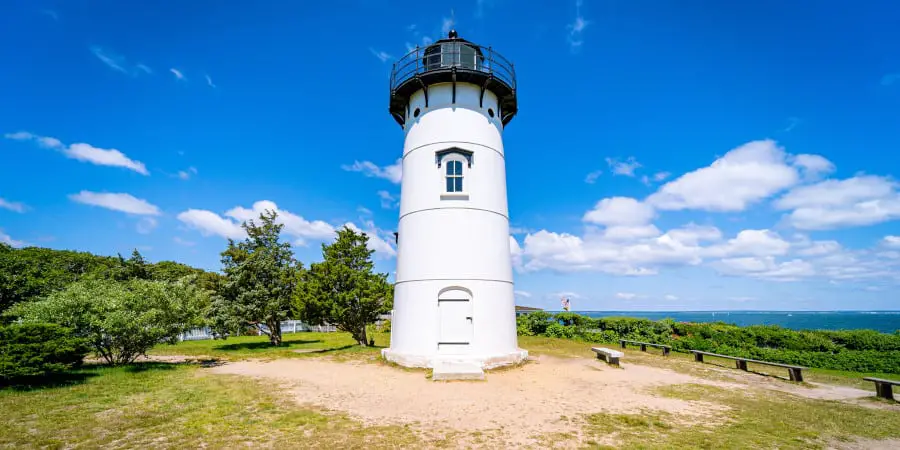Menu
Menu

With numerous attempts at putting one lightship after another, they were either driven off course or were wrecked. Even with the short-lived buoys put into place, a decision was made to construct a lighthouse with the contract being given to Anderson & Barr.
With those plans falling through due to a storm. The project was abandoned and picked up later in 1966 after losing lightships in both World War I & II. A “Texas Tower” was built, and it went automated in the 70s. Once again, in the mid-90s, it was hit by a hurricane and was shut down in 2001, and was sold in October 2012 to Dave Schneider.
It is located on Hatteras Island and is one of the barrier islands in North Carolina. The barrier islands are known for surviving the onslaughts of the wind and sea and have long stretches of beaches, dunes, marshes, and maritime forests.
However, the waters off the coast of the outer banks are often called the Graveyard of the Atlantic, where over 600 ships were wrecked due to the shallow shoals, storms, and sometimes war.
Diamond Shoals light is an inactive lighthouse that is found offshore of Cape Hatteras. It extends many miles across the Atlantic and has been considered one of the most dangerous spots in the area. While it had light, its range was completely insufficient to help guide ships to the coast.
So, instead, a lightship was stationed by the shoal in 1824. Unfortunately, it was driven off course many times and even wrecked near Ocracoke Inlet in the year 1827. In 1852, buoys were placed in 1852, but unfortunately, they were short-lived.
In 1889, congress authorized that a permanent lighthouse be put on the coast of the shoal at a whopping $500,000, and the company Anderson & Barr who created the Bank Light in Delaware Bay were given the contract.
In 1891, a caisson (a watertight) was towed from the state of Virginia after being constructed. There it was then put into the ground of the shoal, where it started to lean because of the sandy bottom and the scours by the currents.
To keep it above water, the crew added iron plates on top of the structure to keep it above water. They were close to succeeding until a storm hit on the 4th of July and destroyed the structure in the process. Anderson of Anderson & Barr blamed outdated charts and inaccurate sounds for the destruction of the property.
Because of that, the project was abandoned and $79,000 of the original funds were for the construction of a lightship as a replacement for the failed tower. The lightship was named LV 69, and it was the first of six lightships to be used at Diamond Shoals in the twentieth century.
Before World War I the lightships were assigned to groups of two. With one relieving the other. Sadly, after LV71 was sunk by a German submarine U-140, they were reassigned to a single ship only. However, when World War II was happening, lighted buoys replaced the lightship.
The last lightship to be stationed there was WLV 189 and was the first ship to be built after the coast guard took over duties for the lighthouse, and it was the first lightship that was welded together. It remained in service with the lighthouse until 1966.
In the early 60s, “Texas Tower” was built at six offshore sites and Diamond Shoals was the second to last to be built. It was activated in 1966 and became automated eleven years later, in 1977. The lighthouse was unmanned and got hit hard during Hurricane Fran in 1996.
The damage was so bad that it was deemed unsafe to use the catwalks because they were rotten. So, a helicopter was used to visit the tower to safely change the light. As luck would have it, this lighthouse was shut down in 2001 and the light has been extinguished and removed ever since. With the light gone, the lighthouse still stands and is visited by fishermen.
In 2012 the lighthouse was auctioned off because it was said that it needed over $2.3 million for repairs. It was sold in October 2012 for $20,000 to Dave Schneider, who has made plans to restore it in the future. He was able to cut off a million dollars for the repairs by getting people to volunteer. Schneider also plans to use the tower for his company “Zap Water” to do research which is currently unknown.
If you find yourself by the Diamond Shoal Lighthouse, you should also try a few more things than just sightseeing. How about climbing another lighthouse? Cape Hatteras Lighthouse, which is completely made of bricks, is the tallest in the United States and completely climbable for locals and visitors.
If seeing one lighthouse is considered one too many. You can always go to the Graveyard of the Atlantic Museums. Where you can get a more in-depth education about the 600 ships that were wrecked there. This place is located near the ferry docks on Ocracoke Island.
For the family, you can go to the Pea Island National Wildlife Refuge and observe over 400 species of birds that have made it their homes. So, if you go down there, just bring your binoculars and while you’re at it. Take a nice walk on the Soundside boardwalk that’s close by.
Lastly, if you’re feeling a little adventurous, you can go kayaking in uncharted waters and explore little-known areas. Or rent out a fishing kayak and try your luck there. Just remember to bring your fishing license from the state of North Carolina before going out there.